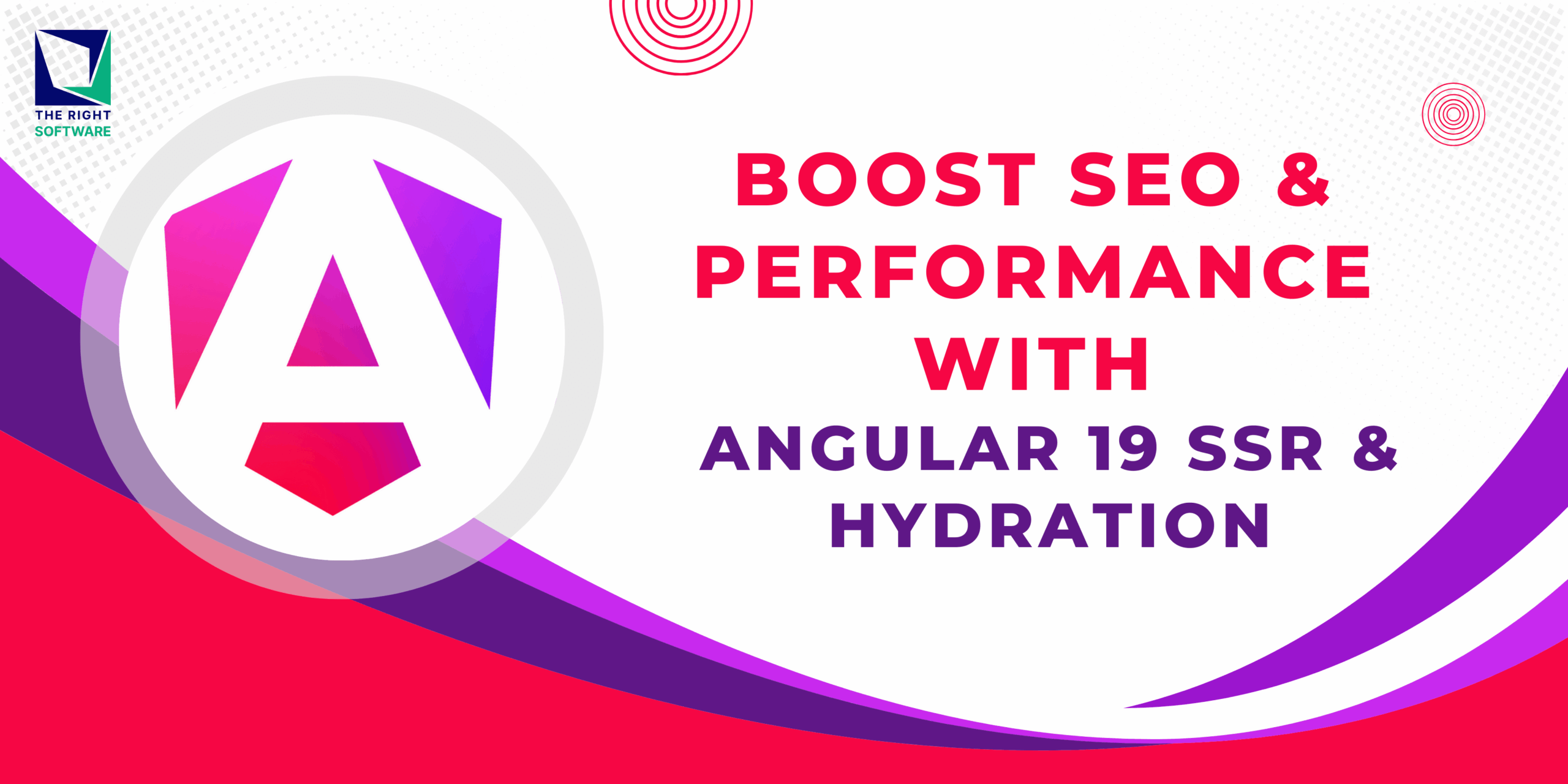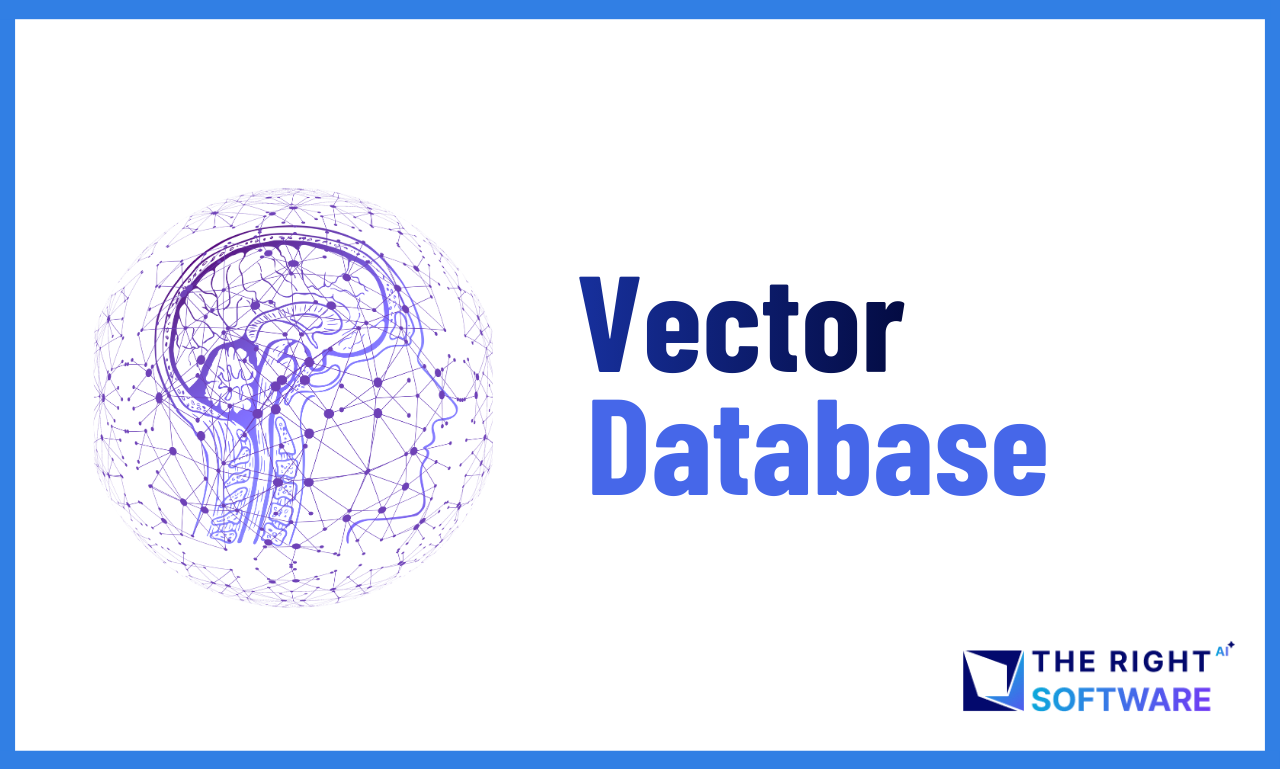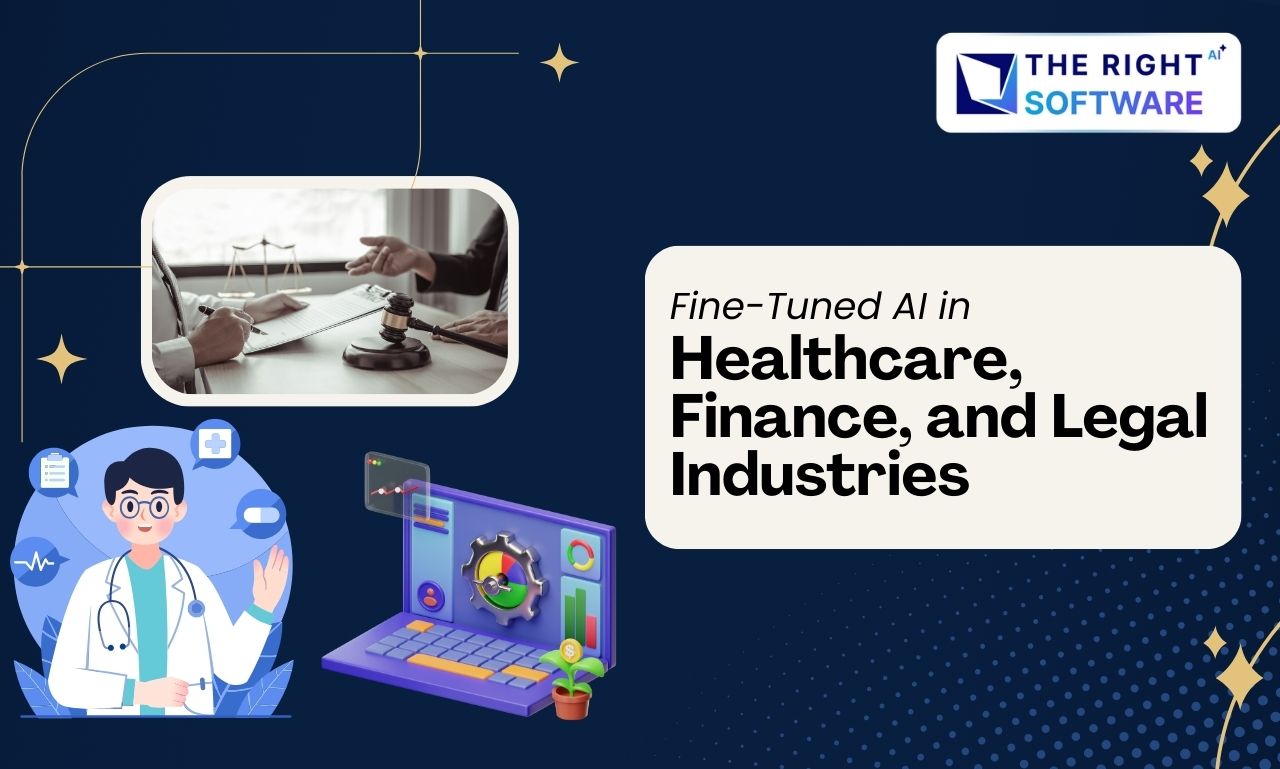What is Hydration
Hydration is the process that restores the server-side rendered application on the client. This includes things like reusing the server rendered DOM structures, persisting the application state, transferring application data that was retrieved already by the server, and other processes.
How Hydration Works in Angular 19?
When SSR is enabled in Angular:
The server renders the app and sends a fully rendered HTML page to the client.
The client receives the static HTML, but it doesn’t have the interactivity of an Angular app yet.
Hydration is the process of taking this server-rendered HTML and making it interactive by bootstrapping Angular on the client-side.
Benefits of Hydration in Angular 19:
Faster First Load: The user sees the content quickly (due to SSR), and then Angular “hydrates” the page by adding interactivity without re-rendering it entirely.
No Flicker: Traditional client-side rendering can cause a visible flash of unstyled content (FOUC) or re-render. Hydration prevents this, as it continues from where the server left off.
Improved Performance: By reusing the server-rendered HTML, Angular reduces the need for unnecessary client-side rendering and boosts the performance, especially for slow networks.
Better SEO: With SSR and hydration, search engines can index the content on the page, which can improve your page’s visibility in search results.
What is Server-Side Rendering (SSR)?
Server-Side Rendering (SSR) means rendering your Angular app on the server instead of in the browser.
Normally, Angular apps are Client-Side Rendered (CSR). This means the browser downloads a blank HTML page and some JavaScript files, and then builds the page using Angular.
With SSR, the server does the rendering and sends a fully formed HTML page to the browser.
Example:
CSR: Browser gets empty <app-root></app-root>, then fills it using JS.
SSR: Browser gets a full HTML with content inside <app-root> already rendered.
Why is SSR Beneficial?
Faster First Contentful Paint (FCP): Users see content much, much faster because the browser doesn’t have to wait for JS execution to render the initial view. This significantly improves perceived performance.
Improved SEO: Search engine crawlers receive HTML with actual content right away. They don’t need to execute JavaScript perfectly to understand your page structure and text, leading to better indexing and ranking potential.
Better User Experience on Slow Connections/Devices: Users get content sooner, reducing frustration.
Improved Social Sharing: When sharing links on platforms like Facebook or Twitter, their crawlers can easily grab titles, descriptions, and images from the server-rendered HTML.
When to Use?
Blogs, news sites
E-commerce product pages
Landing pages with SEO importance
SSR, powered by Angular Universal (now @angular/ssr), addresses the core weaknesses of pure CSR for initial loading and SEO. But… It introduced its own little problem.
Understanding the Default: Client-Side Rendering (CSR)
How Most Angular Apps Start Life
By default, when you create a new Angular application using the Angular CLI (ng new my-app), it’s set up for Client-Side Rendering (CSR).
What does CSR mean?
Imagine you’re ordering flat-pack furniture online.
Request: You ask the website (the server) for the product page (your app’s URL).
Delivery: The server sends you a nearly empty box (a basic HTML file, often called index.html). This box might have some instructions (references to JavaScript and CSS files) but no actual furniture yet.
Assembly: Your web browser receives this empty box. It then follows the instructions:
It downloads the instruction manuals (the JavaScript bundles – your Angular code!).
It downloads the paint and finishes (the CSS files).
Crucially, the browser’s JavaScript engine runs the Angular code. This code figures out what components to display, fetches any necessary data from APIs, and then builds the furniture (renders the actual HTML content) right there inside your browser (the “client”).
The CSR Flow:
User requests your-app.com.
Server sends back a minimal index.html + links to JS/CSS.
Browser downloads index.html.
Browser downloads JS bundles (can be large!).
Browser downloads CSS.
Browser executes Angular JavaScript.
Angular renders the initial view (often a loading spinner).
Angular makes API calls to get dynamic data.
Angular updates the view with the fetched data.
The user finally sees the complete, interactive application.
Pros of CSR:
Rich Interactivity: Once loaded, SPAs feel very fast and responsive, like desktop applications, because navigation often happens without full page reloads.
Server Relief: The server primarily just serves static files; most of the rendering work happens on the user’s machine.
Cons of CSR:
Slow Initial Load / Time to Content: Users (and search engines) might stare at a blank page or a loading spinner for a while, especially on slower connections or devices, waiting for all that JavaScript to download and execute. This is often measured by metrics like First Contentful Paint (FCP).
SEO Challenges: While search engines like Google have gotten better at executing JavaScript, they might not always wait long enough or execute it perfectly. They prefer to see meaningful content in the initial HTML response. With basic CSR, the initial HTML is mostly empty.
Potential “Blank Screen” Flicker: The initial empty page before Angular kicks in can be jarring.
This is where Server-Side Rendering comes in to address these initial load and SEO concerns.
What We’ll Cover in This Article
Introduce and explain the concept of OpenTelemetry and its importance for Node.js applications.
Detail the prerequisites needed to follow the tutorial, including installing necessary packages and setting up a basic Node.js project.
Provide a step-by-step implementation with code segments, highlighting key concepts such as creating spans and exporting trace data.
Showcase the final code integration by presenting a complete, working example that you can use as a reference or starting point for your projects.
Discuss the results and potential use cases of OpenTelemetry in real-world Node.js applications.
Offer insights and concluding thoughts on the benefits and future developments in the field of observability.
SSR: The Destructive Bootstrap
So, SSR sounds great, right? The server sends fully rendered HTML, the user sees content instantly. Awesome! But what happens next?
Remember, Angular is still a client-side framework at heart. It needs to run in the browser to handle clicks, form inputs, dynamic updates, and all the interactive bits.
The Traditional SSR Problem:
Before Hydration became mainstream in Angular, this is what happened after the server sent the HTML:
Server Delivers: The browser receives and displays the beautiful, server-rendered HTML. Looks good!
JS Arrives: The Angular JavaScript bundles (downloaded in the background) finish loading.
Angular Wakes Up (The Old Way): Angular starts running on the client.
Demolition Time: Instead of recognizing the existing HTML, the client-side Angular app would effectively say, “Okay, time to build the application!” It would completely discard the server-rendered HTML DOM structure.
Rebuilding: Angular would then re-render the entire application from scratch in the browser, building a brand new DOM structure.
It’s like the delivery truck brings you a fully assembled table (server-rendered HTML). You put it in your dining room. Then, the assembly crew (client-side Angular) arrives, throws your perfectly good table out the window, opens up a new flat-pack box containing the exact same table parts, and builds it again right there in your dining room.
Why was this bad?
The “Flicker”: Users would often see a noticeable “flicker” or content shift. The server-rendered content would appear, and then disappear/change slightly as the client-side app destroyed and rebuilt the DOM. It was visually jarring.
Wasted Work: The server did all the work to render the HTML, only for the client to throw it away and do the exact same rendering work again. This wasted CPU cycles on the user’s device.
Slower Time To Interactive (TTI): Although the content appeared fast (good FCP), the application wasn’t truly interactive (clickable, usable) until the client-side app had finished its demolition and rebuilding process. This delay hurt the TTI metric.
This inefficiency and visual disruption were significant drawbacks of traditional SSR implementations. We needed a way to bridge the gap – to reuse the server’s hard work.
Hydration!
This is where Hydration comes to the rescue. It’s the missing piece that makes SSR truly seamless and efficient in Angular.
What is Hydration?
Hydration is the process of taking the static HTML rendered by the server and “breathing life” into it on the client-side without destroying and recreating it. It makes the static HTML interactive.
Back to the furniture analogy:
The delivery truck brings the fully assembled table (server-rendered HTML). Now, instead of throwing it out, the Hydration crew (the new client-side Angular process) arrives and:
Inspects: They look at the table already sitting there.
Connects: They attach the interactive parts – maybe plugging in built-in lights, ensuring the extendable leaf mechanism works smoothly, polishing the surface (attaching event listeners like (click), setting up data bindings).
Done! The existing table is now fully functional and ready to use. No demolition, no rebuilding the core structure.
How Hydration Works in Angular (Simplified):
Server Renders: The server generates the HTML and sends it to the browser. It also includes some subtle markers or comments within the HTML to help the client-side app understand the structure.
Client Receives & Displays: The browser displays the static HTML immediately (fast FCP).
JS Arrives: The Angular JavaScript bundles load.
Angular Wakes Up (The New Hydration Way): Angular starts up on the client with Hydration enabled.
DOM Walk: Instead of clearing the DOM, Angular carefully walks through the existing server-rendered DOM structure.
Matching & Attaching: It compares this existing DOM to the component structure it expects to render. As it finds matches:
It attaches event listeners (like (click), (input)) to the existing DOM nodes.
It sets up data bindings.
It essentially claims ownership of the existing DOM elements.
Seamless Transition: The application becomes fully interactive without the jarring flicker or the performance cost of re-rendering everything.
Key Benefit: Hydration is non-destructive. It reuses the server-rendered DOM instead of destroying it.
Advantages of Hydration:
No Flicker: Eliminates the visual disruption caused by the old destroy-and-recreate process.
Improved Performance:
Faster Time To Interactive (TTI): The app becomes interactive much sooner because Angular doesn’t waste time re-rendering.
Reduced Client-Side Work: Less CPU usage on the user’s device.
Potentially improves Interaction to Next Paint (INP), a newer Core Web Vital metric measuring responsiveness.
Smoother User Experience: The transition from static content to a fully interactive app is seamless.
Leverages SSR Benefits: You still get the fast FCP and SEO benefits of SSR, but now without the major drawback.
Hydration, combined with SSR, offers the best of both worlds: fast initial loads, good SEO, and efficient client-side bootstrapping.
Rendering Method | Speed | SEO | Interactivity | Flicker? | Use Case |
CSR | Slow | Poor | After JS Loads | Yes | SPAs, Dashboards |
SSR | Fast | Good | After JS Loads | Yes | Blogs, eCommerce |
SSR + Hydration | Fast | Excellent | Immediate | No | SEO-focused apps |
Implementation Guide: SSR & Hydration in Angular 19
Goal: To configure an existing or new Angular application for Server-Side Rendering with non-destructive Hydration enabled.
Prerequisites:
Node.js: Ensure you have a recent LTS version installed. SSR runs your Angular app in a Node.js environment.
Angular CLI: Make sure your Angular CLI is up-to-date. If you’re targeting v19, you’ll need the v19 CLI.
# Check version (or install/update)
ng version
npm install -g @angular/cli@latestAngular Project: You need an existing Angular project (v19 ideally, when available) or create a new one:
# Create a new standalone project (recommended)
ng new my-angular19-ssr-app
cd my-angular19-ssr-app
Note: In the latest Angular CLI, while creating a new project, there’s an option in the CLI itself asking whether you want to add SSR (Server-Side Rendering) to the app or not.
Add SSR Capabilities Manually or in Existing Project (@angular/ssr)
This is the core step. The Angular CLI provides a schematic to automate the setup. In the root directory of your project, run:
ng add @angular/ssr
Verify Hydration is Enabled
While ng add @angular/ssr is expected to enable Hydration by default in v19 (as it does in v17+), it’s good practice to verify.
Open your main application configuration file: src/app/app.config.ts.
Look inside the providers array within the ApplicationConfig object.
Ensure the provideClientHydration() function is being called.
// src/app/app.config.ts (Example structure)
import { ApplicationConfig, provideZoneChangeDetection } from '@angular/core';
import { provideRouter } from '@angular/router';
import { provideClientHydration, withEventReplay } from '@angular/platform-browser'; // <--- Make sure this is imported
import { routes } from './app.routes';
export const appConfig: ApplicationConfig = {
providers: [
provideZoneChangeDetection({ eventCoalescing: true }), // Or other zone config
provideRouter(routes),
// --- VERIFY THIS LINE IS PRESENT ---
provideClientHydration(withEventReplay())
// ------------------------------------
// Other providers (like provideHttpClient etc.)
]
};If it’s missing (which would be unexpected after running ng add @angular/ssr), simply add provideClientHydration() to the providers array and make sure it’s imported from @angular/platform-browser.
Build and Run the SSR Application
The ng add command typically adds scripts to your package.json for convenience.
Development Mode (Recommended for testing):
This command builds both client and server bundles and starts the Node.js server with live-reloading capabilities.
npm run dev:ssr
Open your browser and navigate to the local address provided (usually http://localhost:4000).
Production Mode:
Build: Create optimized production bundles for both browser and server.
npm run build:ssr
# or sometimes just 'npm run build' if angular.json is configured for itThis will output files to your dist/your-project-name/ directory, containing browser/ and server/ subdirectories.
Serve: Run the pre-built server bundle using Node.js.
npm run serve:ssrAccess the application via the specified production port (often 4000 by default, check server.ts)
Verify SSR and Hydration are Working
Use the same verification techniques detailed previously:
View Page Source: Right-click -> “View Page Source”. You should see your component’s rendered HTML content within the <app-root> tags, not just empty tags.
Disable JavaScript: Use browser DevTools (F12) to disable JavaScript and reload the page. The core content should still be visible (though non-interactive).
Browser Console: Check the DevTools console for any Hydration-related messages or warnings. In development mode (dev:ssr), Angular often logs information about mismatched DOM nodes if Hydration encounters issues. Look for success messages or investigate warnings.
Network Tab: Inspect the initial HTML document request. The response body should contain the fully rendered HTML.
Observe Behavior: Crucially, you should not see a noticeable “flicker” where content appears and then quickly re-renders or shifts layout shortly after loading.
Follow Hydration Best Practices (Crucial!)
Remember the rules from the previous guide, as they remain essential:
NO Direct DOM Manipulation: Avoid document, window, element.innerHTML, etc. Use Angular bindings, *ngIf, *ngFor, and Renderer2 when necessary.
Use Platform Checks: Guard browser-specific API calls (localStorage, window.innerWidth) using isPlatformBrowser(inject(PLATFORM_ID)) within your components/services.
Valid HTML: Ensure your component templates produce valid HTML structure.
Third-Party Libraries: Verify SSR compatibility or lazy-load client-only libraries within if (isPlatformBrowser(…)) blocks (often in ngAfterViewInit).
State Transfer: Use Angular’s TransferState mechanism (makeStateKey, TransferState.set/get) to pass data fetched on the server to the client, preventing duplicate API calls on bootstrap. Ensure provideTransferCache() (or module equivalents) is set up, which ng add @angular/ssr usually handles.
// Example: Using inject() for PLATFORM_ID (common in v17+)
import { Component, Inject, PLATFORM_ID, inject, AfterViewInit } from '@angular/core';
import { isPlatformBrowser } from '@angular/common';
@Component({ /* ... */ })
export class MyExampleComponent implements AfterViewInit {
private platformId = inject(PLATFORM_ID); // Use inject()
ngAfterViewInit(): void {
if (isPlatformBrowser(this.platformId)) {
// Safe to use browser-specific APIs here
console.log('Component Initialized in Browser!');
localStorage.setItem('hydrated', 'true');
// Example: Dynamically load a client-only library
import('some-heavy-charting-library').then(lib => {
// lib.initializeChart(...);
});
}}}Conclusion
Server-Side Rendering and Hydration are essential tools in modern Angular development. They help make your apps faster, more SEO-friendly, and give users a better experience. While it may seem complex at first, with practice it becomes an incredibly useful skill.
Pro Tip
Use TransferState to pass server-fetched data to the client to avoid duplicate API calls during hydration. It’s a small trick that improves perceived performance significantly.
If you’re looking to hire skilled Angular developers to implement SSR and hydration for high-performance web apps, our team is here to help.





